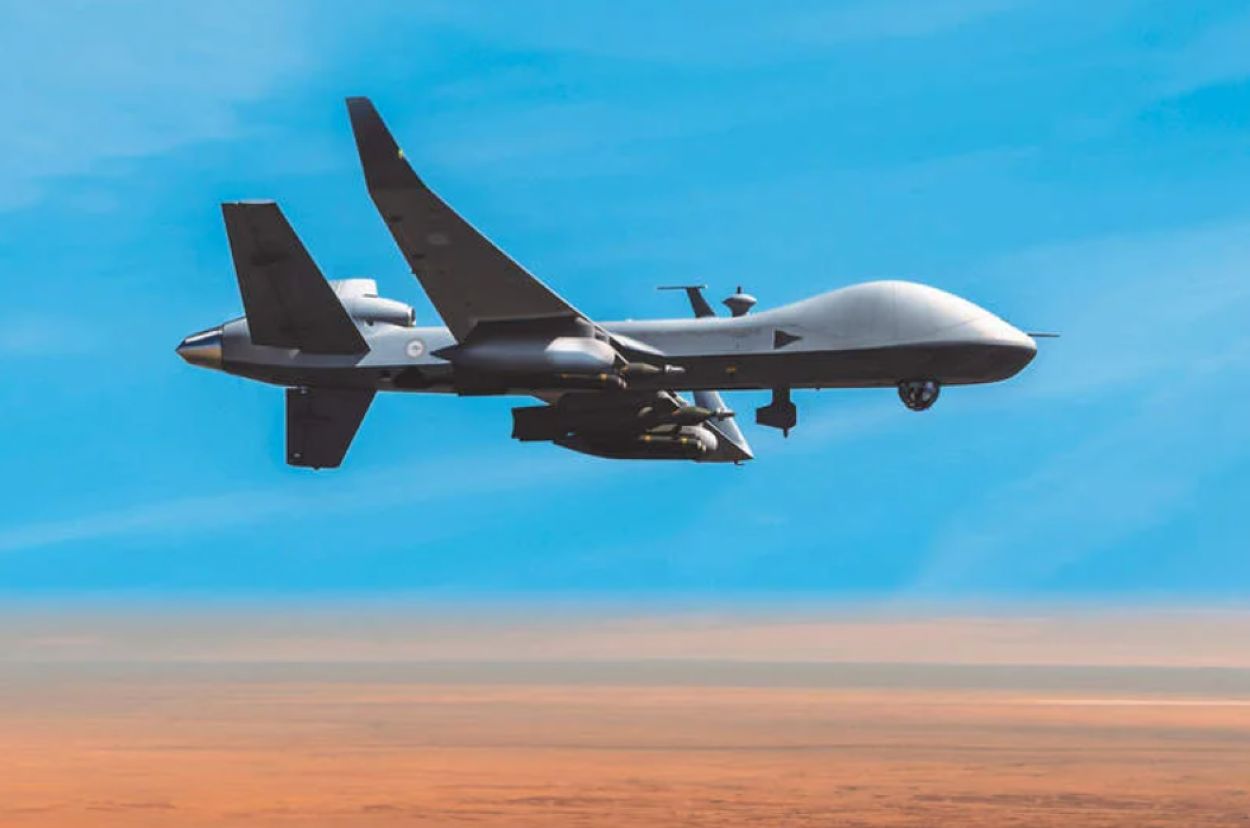A US Air Force’s MQ-9 Reaper drone, on an air support mission under Operation Inherent Resolve to defeat ISIS, was reportedly downed on January 18 in northern Iraq. This is the first shooting of MQ-9 in 2024.
The USAF’s drone that earned the notoriety of being a “terrorist hunter” is likely to have been shot by an Iranian surface-to-air missile fired by an Iraqi group.
The drone crashed near the Balad Air Base and was recovered by the Iraqi Security Forces. An Iran-backed group of Iraqi militias – The Islamic Resistance in Iraq has claimed responsibility for the shooting. The group said that it had used SAM to bring down the Reaper.
The Iraqi militias in the region have Iranian-made “358” surface-to-air missiles.
This has been confirmed by the US military officials as well. The US military has turned the heat on the Iraqi militia. On January 4, the US conducted a rare drone strike in Baghdad, killing a leader of an Iranian-backed militia.
The Reaper took off from Ali Al-Salem Air Base in Kuwait and was shot over Diyala Province in Iraq. The Iraqi group has provided aircraft debris as evidence. It shared photographs of what appear to be winglets on the roughly $30 million MQ-9, while another showed a possible external fuel tank.
🇺🇸🇮🇶 | Pro-Iranian militias claimed the downing of a US MQ-9 Reaper UCAV over Diyala in northeastern Iraq.
The photos of wreckage have been released. pic.twitter.com/IcmmD7qoI5
— Status-6 (Military & Conflict News) (@Archer83Able) January 18, 2024
It is unclear if the US military has regained possession of the crashed MQ-9.
This is the second incident of shooting down MQ-9 in two months. In November 2023, Yemen-based Houthi rebels brought down one Reaper off the coast of Yemen.
In 2023, the US lost three MQ-9s. In addition to the drones lost over Iraq and near Yemen, an MQ-9 crashed into the Black Sea in March 2023 after a Russian fighter struck its propeller. Two MQ-9s were damaged over Syria in July 2023 when Russian fighters burned them by releasing flares.
Keeping MQ-9s Relevant
After fighting in wars in the Middle East and Afghanistan, where the adversary did not have matching capabilities, the MQ-9 Reaper (also known as Predator B) gained notoriety as one of the best-performing weapon platforms for the US and at a fraction of the cost of both man and money.
The USAF Air Force calls the MQ-9 a Remotely Piloted Aircraft, or RPA. A Reaper is about as giant as an A-10 Thunderbolt II. It can carry 3,750 pounds of ordnance (including up to eight Hellfire missiles with the correct modifications) and cover about 2,000 miles without refueling.
It can go around the globe while its operator sits thousands of miles away as it is satellite-linked to the command center. What the aircraft lacks in stealth, the pilots can make up for in tactics.
ISR is a role that the MQ-9s play with much elan. The MQ-9’s baseline surveillance system uses a Multi-Spectral Targeting System that collects data from a suite of onboard visual sensors, including an infrared, color, or monochrome daylight video camera, an image-intensified video camera, a laser range finder, and a laser illuminator.
Reaper pilots can view these feeds separately or as a single fused stream on high-definition displays. The Reaper can eavesdrop on the enemy from beyond its range of fire.
However, the increased incidents of shooting of the MQ-9s have brought to the fore questions about the relevance of remotely piloted aircraft. With “near-peer” adversaries like China and Russia, well-armed militant groups are making the airspace highly contested. The USAF does not see the role of one of its most decorated, successful aircraft in the future battlespace and intends to phase out the Reapers by 2035.
In 2021, the US Air Force (USAF), for the first time, revealed its intention to place the last order for the ‘hunter-killer’ MQ-9 Reaper drone, with deliveries expected in 2023 and 2024.
The abrupt full stop to the purchase of MQ-9s is seen as an indication of the USAF seeing a limited role for the heavy drones in ‘non-permissive’ air spaces.

Future Of MQ-9 UAVs
The Air Force Special Operations Command (AFSOC) has suggested a future where MQ-9 Reaper drones act as ‘capital ships’ deploying smaller uncrewed aerial systems (UASs) to establish a sensor grid or a communications pathway for the joint force.
The USAF decision has raised concerns in the US Congress about the organization compromising its ISR capabilities. It has sent the manufacturing firm General Atomics into a tizzy. The AFSOC, on the other hand, along with the drone manufacturer, is exploring how to establish a network of small drones.
The USAF is, therefore, opting for smaller, stealthier, and better networked ISR technologies to ensure their survivability in highly contested environments.
The UAS network suggested by the AFSOC is a vital component of an adaptive airborne enterprise (A2E) project. Under the project, MQ-9s will evolve beyond their traditional role of intelligence gathering and strike platforms. The adapted MQ-9 will act as a “mothership,” commanding and controlling additional small UAS platforms equipped with their latest kinetic and non-kinetic capabilities and sensors.
They will serve as the mobile command and control center for a network of small drones that will form an “expansive sensing grid” and help special operations forces get deep into the battlespace.
- Ritu Sharma has been a journalist for over a decade, writing on defense, foreign affairs, and nuclear technology.
- She can be reached at ritu.sharma (at) mail.com
- Follow EurAsian Times on Google News




